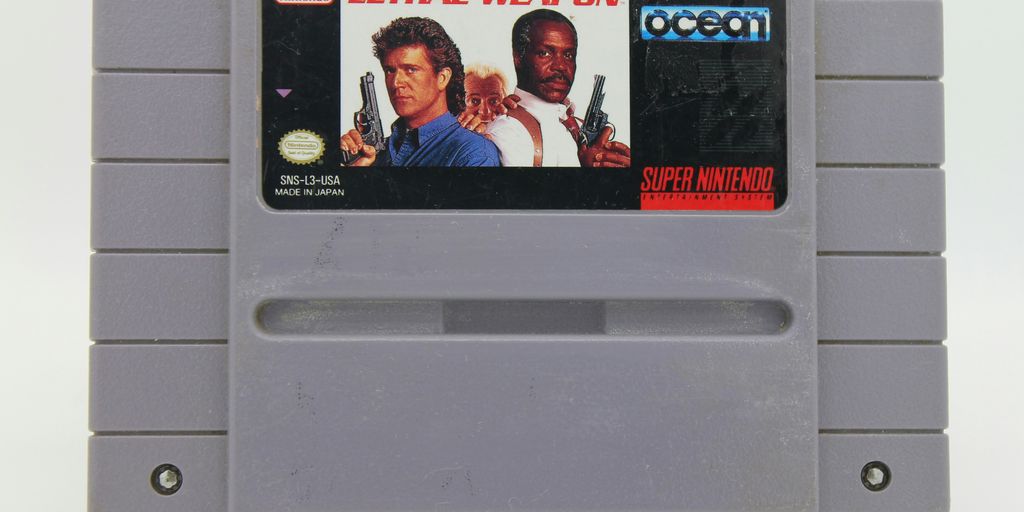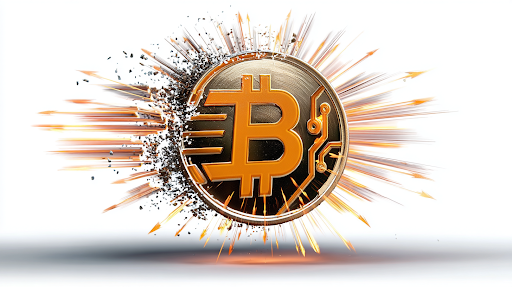It seems like everywhere you look these days, there’s another video game remake hitting the shelves. Remember those classic games you grew up with? Well, they’re back, often looking better than ever. It’s not just a passing fad; these remakes video games are really taking over the gaming world. Let’s dig into why this is happening and what makes them so popular.
Key Takeaways
- Remakes video games bring back old favorites, letting people relive their childhood memories and share them with new players.
- Making remakes video games can be less risky for companies because the original games already have fans.
- New technology helps make remakes video games look amazing and play smoothly, even for really old titles.
- Remakes video games make classic games available to a wider audience, including those who never got to play them before.
- Sometimes, remakes video games can even spark new ideas for game developers, showing how old concepts can be updated.
The Allure Of Nostalgia In Remakes Video Games
Revisiting Beloved Franchises
There’s just something special about going back to games we loved. It’s like meeting up with an old friend. Remakes give us a chance to relive those experiences, but with a fresh coat of paint. Think about it: getting to explore Midgar again in Final Fantasy VII Remake, or facing the horrors of Silent Hill 2 with updated graphics and gameplay. It’s not just about playing the game again; it’s about reconnecting with a part of our past. It’s a powerful feeling, and it’s a big reason why remakes are so popular.
Connecting Generations Through Gaming
Video games aren’t just a hobby; they’re a shared cultural experience. Remakes can bridge the gap between older and newer generations of gamers. Someone who grew up playing the original Resident Evil can now share that experience with their kids, who might not be able to appreciate the clunky controls and dated graphics of the original. It’s a way to pass down a love for gaming and create new memories together. Plus, it sparks conversations and allows for a shared appreciation of gaming history. It’s like saying, "Hey, this is what I grew up with, and now you can experience it too!" The Nintendo Switch’s success is a testament to this appeal.
Experiencing Classics With Modern Polish
Let’s be honest, some older games haven’t aged well. The graphics can be rough, the controls can be frustrating, and the gameplay mechanics can feel outdated. Remakes offer a solution by taking those classic games and giving them a modern makeover. We get to experience the same stories and characters we loved, but with updated visuals, smoother controls, and refined gameplay. It’s like watching a restored classic film – you get to appreciate the original story in a way that’s more accessible and enjoyable. It’s about preserving the heart of the game while making it palatable for a modern audience.
Financial Incentives Driving Remakes Video Games
Reduced Development Risks
Remaking a game is often seen as a safer bet than creating something entirely new. The core concept, story, and characters are already established, which significantly lowers the risk of failure. Think of it like this: the blueprint is already there; you’re just updating the materials. This is a big deal for publishers who are always looking to minimize risk. It’s easier to predict the success of a remake than a completely original title.
Guaranteed Audience Engagement
One of the biggest advantages of remakes is the built-in audience. People who loved the original game are already eager to see it reimagined. This pre-existing fanbase provides a solid foundation for sales and marketing. Plus, there’s a lot of buzz and free publicity that comes with remaking a beloved title. It’s like having a head start in a race. The PHEV market is similar, with a guaranteed audience looking for eco-friendly options.
High Return On Investment
Remakes often offer a higher return on investment compared to new IPs. The development costs can be lower, and the potential for sales is high due to the factors mentioned above. This makes remakes an attractive option for companies looking to maximize profits. It’s a pretty simple equation: lower costs + higher sales = happy investors. The economics of nostalgia are strong, and that translates to a healthy bottom line. Here’s a simplified example:
| Project Type | Development Cost | Expected Sales | ROI |
|---|---|---|---|
| New IP | $80 Million | 2 Million | Low |
| Remake | $50 Million | 3 Million | High |
Technological Advancements Enhancing Remakes Video Games
It’s not just about nostalgia; technology plays a huge role in why remakes are so popular. We’ve got the tools now to make these games look and play better than ever before. It’s a win-win.
Leveraging Next-Gen Capabilities
Modern consoles and PCs let developers do things that were simply impossible back in the day. Think about it: higher resolutions, better frame rates, and way more detailed graphics. Games that were once blocky and pixelated can now be stunning visual experiences. Plus, things like ray tracing and advanced lighting effects add a whole new level of immersion. It’s like seeing your favorite old movies get a 4K restoration – the core is the same, but the presentation is miles better. For example, a water-cooled gaming laptop can handle the most demanding remakes with ease.
Preserving Gaming History
Remakes aren’t just about making games look pretty; they’re also about keeping them alive. Old consoles break down, and finding working copies of classic games can be tough. Remakes ensure that these games are available for future generations to enjoy. It’s like a digital museum, preserving gaming history for everyone. Plus, sometimes these remakes fix bugs or glitches that were present in the original releases, making them even better.
Transforming Visuals And Gameplay
It’s not just about slapping a new coat of paint on an old game. Remakes often involve completely overhauling the visuals and gameplay. This can mean new character models, updated textures, and even redesigned levels. Sometimes, the gameplay is tweaked to feel more modern, with updated control schemes and new mechanics. It’s a delicate balance, though. You want to improve the game without losing what made it special in the first place. It’s like a chef taking a classic recipe and adding their own twist – it should still taste familiar, but with something new and exciting.
Expanding Accessibility For Remakes Video Games
Remakes aren’t just about pretty graphics; they’re also about making games available to a wider audience. Think about it: old games can be tough to get running on modern systems, or they might have control schemes that feel clunky by today’s standards. Remakes fix that.
Introducing Classics To New Players
Remakes act as a gateway for new players to experience iconic games they might have missed the first time around. It’s like getting a fresh coat of paint and a new engine for a classic car – the soul is still there, but it’s much easier to drive. For example, someone who grew up with modern consoles might be hesitant to try an old game with pixelated graphics and complicated menus. A remake offers a more approachable entry point, letting them see what all the fuss was about. This is especially true for genres that have evolved significantly over time. Imagine trying to get into early survival horror games without the quality-of-life improvements we’ve come to expect. A remake can bridge that gap.
Overcoming Original Limitations
Original games often suffer from technical limitations that were unavoidable at the time of their release. These could include:
- Limited save systems
- Poor camera controls
- Lack of accessibility options
- Low resolution textures
Remakes can address these issues, providing a smoother and more enjoyable experience. It’s not just about making the game look better; it’s about making it play better. Think about games that originally had fixed camera angles. A remake might introduce a free-roaming camera, giving players more control and a better sense of immersion. Or consider games that lacked proper tutorials. A remake could add a comprehensive tutorial system, making the game more accessible to newcomers. This is a big deal for murder mystery games in VR, where immersion is key.
Modernizing User Experience
User experience (UX) has come a long way since the early days of gaming. Remakes often overhaul the original game’s UX, making it more intuitive and user-friendly. This can involve:
- Streamlining menus and interfaces
- Adding customizable controls
- Improving the game’s overall flow
These changes might seem small, but they can have a big impact on the player’s enjoyment. A clunky interface can be a major barrier to entry, especially for players who are used to modern games. By modernizing the UX, remakes can make classic games more appealing to a wider audience. It’s about respecting the original game while also making it more accessible and enjoyable for today’s players.
Creative Evolution Through Remakes Video Games
Springboards For New Ideas
Remakes aren’t just about rehashing old ground; they can actually be launchpads for completely new concepts. Think of it like this: the core game is a solid foundation, but developers can then experiment with mechanics, story elements, or even entire genres. It’s a chance to take calculated risks without the pressure of building something entirely from scratch. It’s like having a blueprint but being free to design the interior however you want. This approach can lead to some really interesting and unexpected results, pushing the boundaries of what a remake can be.
Refining Original Narratives
Sometimes, the original story had potential but didn’t quite hit the mark. Maybe there were plot holes, underdeveloped characters, or a rushed ending. Remakes offer a unique opportunity to fix these issues and tell the story the way it was always meant to be told. It’s not about changing the core message, but about polishing it and making it more impactful. This can involve:
- Adding new scenes to flesh out character arcs.
- Rewriting dialogue to improve clarity and emotional resonance.
- Expanding on the lore to create a richer world.
It’s like a director’s cut, but for video games. This can be a great way to introduce forgotten gems to a new audience.
Developer Innovation Within Established Worlds
Remakes provide a playground for developers to flex their creative muscles within a familiar framework. They can experiment with new technologies, gameplay mechanics, and art styles without having to worry about creating an entirely new world from scratch. This allows them to focus on innovation and push the boundaries of what’s possible within the established universe. It’s like a chef taking a classic recipe and adding their own unique twist. The end result is something familiar, yet fresh and exciting. This can lead to unexpected innovations that influence the industry as a whole. It’s a chance for developers to show off their skills and leave their mark on a beloved franchise.
Player Demand Fueling Remakes Video Games
Community-Driven Requests
It’s no secret that a lot of remakes happen because players won’t stop asking for them. Seriously, the internet is full of petitions, forum threads, and social media campaigns all dedicated to bringing back beloved games. Developers and publishers are paying attention to this, and often, the loudest voices get heard. Think about it: if a company knows there’s a built-in audience practically begging for a remake, it makes good business sense to deliver. It’s like they’re saying, "Okay, okay, we hear you! Here’s that game you’ve been dreaming about."
Desire For Forgotten Gems
Sometimes, it’s not just about the big-name titles. There are plenty of smaller, more obscure games that have dedicated fanbases. These "forgotten gems" might not have sold millions of copies, but they left a lasting impression on the people who did play them. The desire to see these games brought back to life, with modern graphics and gameplay, is a powerful force. It’s about preserving gaming history and giving these classic franchises a second chance to shine. It’s cool to see a game that maybe only a few people remember get a chance to reach a whole new audience.
Anticipation For Iconic Titles
Then there are the iconic titles, the games that everyone knows and loves. When rumors start swirling about a possible remake of one of these games, the hype is unreal. People get seriously excited, dissecting every tiny bit of information and speculating about what the remake will be like. This anticipation is a huge driver for remakes. The Final Fantasy VII remake is a perfect example. People had been waiting for that game for years, and the anticipation was through the roof. The success of that remake just shows how much demand there is for these nostalgia-driven remasters of iconic games.
So, What’s the Deal with All These Remakes?
Alright, so we’ve talked a lot about why video game remakes are everywhere these days. It’s pretty clear they’re not going anywhere soon. Think about it: they let new players check out classic games without dealing with really old graphics or clunky controls. And for us older folks, it’s a cool trip down memory lane, but with all the modern bells and whistles. Plus, for game makers, it’s a safer bet than starting something totally new from scratch. It just makes sense. It’s a win-win, really. So, yeah, expect to see a lot more familiar titles getting a fresh coat of paint in the years to come. And honestly, that’s probably a good thing for everyone.
Frequently Asked Questions
What exactly are video game remakes?
Video game remakes are basically updated versions of old games. Think of it like taking a classic movie and remaking it with today’s special effects and actors. Developers take the original game’s story and core ideas, then rebuild them from the ground up using modern technology, making them look and play much better.
Why are video game remakes so popular these days?
Remakes are super popular right now for a few reasons. A big one is nostalgia; people love to relive their favorite childhood games with a fresh coat of paint. Also, they’re less risky for game companies because the original game already proved it was fun, so there’s a built-in audience ready to buy it. Plus, new technology makes these old games look amazing.
Do remakes help preserve older video games?
Absolutely! Remakes help keep gaming history alive. They let new players, who might not have access to old game systems or who are put off by outdated graphics, experience classic stories and gameplay. It’s like a museum for video games, but you get to play the exhibits!
Are there any downsides to having so many remakes?
While remakes are great, some people worry that game companies might focus too much on them instead of making brand new games. They fear that this could slow down new ideas and original stories in the gaming world. It’s a balancing act for developers to give fans what they want while also pushing gaming forward.
Can remakes lead to new game ideas?
Remakes can actually spark new ideas! Developers often add new features, improve the story, or even change parts of the gameplay to make the remake better than the original. This process can lead to new ways of thinking about game design and storytelling, which can then be used in completely new games.
How do players influence which games get remade?
Players often ask for remakes of games they loved but feel could be even better with modern tech. Sometimes, a game was really good but didn’t get enough attention when it first came out, and a remake gives it a second chance. It’s often the community’s passion for a game that pushes developers to consider remaking it.














